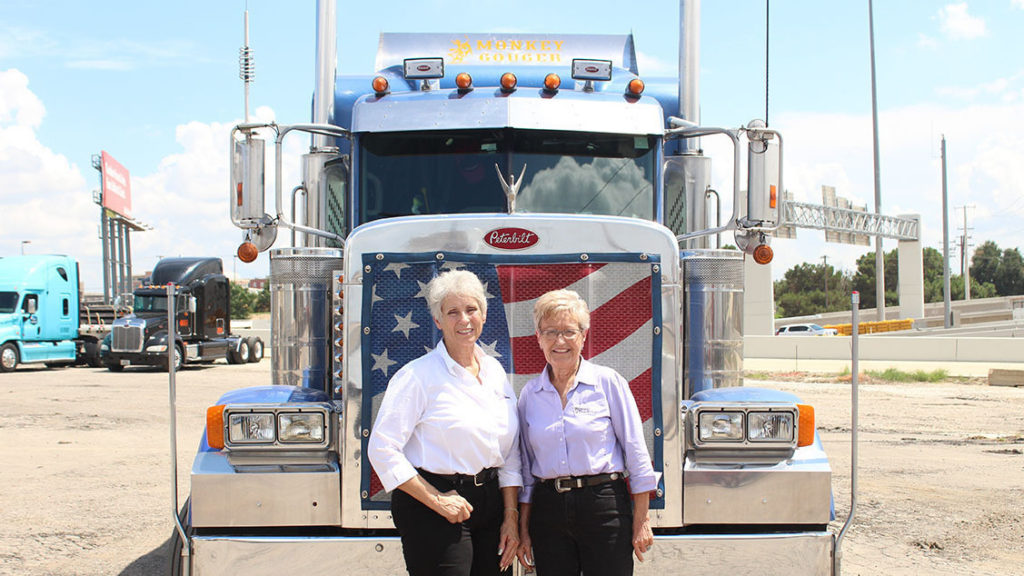It light of International Women’s Day being celebrated on March 8 of this month, ‘Omnitracs’ put together a panel of powerful women in the trucking industry for a virtual roundtable where they addressed significant issues impacting women in the trucking industry today and how more women can and should be recruited.
Speakers included Ellen Voie, founder and CEO of Women in Trucking; Sherri Garner Brumbaugh, president and CEO of Garner Trucking; and Lauren Domnick, senior director of analytics and modeling at Omnitracs.
Women truck drivers are hard to come by in the industry despite data showing they are safe and courteous on the road, and work well with management.
“Women have had CDLs for a long time,” Voie said, adding the first female CDL holder was Lillie McGee Drennan in 1929. “But today, women still look at (trucking) as male-dominated. They think the job requires more strength, or mechanical skills or that there’s heavy lifting involved. They feel unqualified… but our goal at Women in Trucking (WIT) is to change that image, because the trucks have changed and the job has changed.” Voie said to make this happen she believes more women drivers need to be out in the public eye in advertisements and other places where women can see themselves behind the wheel of a transport truck.
“We have an image problem,” she said. “(Women) don’t picture themselves in a truck.” To combat this, Voie stated a number of efforts WIT has put together to change this mindset of even young women. Recently, WIT worked with Girl Scouts to create a transportation patch that girls could earn. “Over 1,000 girls have earned the patch so far,” she said. “We want young girls to look at trucks and have a personal relationship with them.” Voie added WIT is also working on releasing a truck driver doll named Claire. Voie said the doll will be sold at particular truck stops and on Amazon.
On top of this, WIT also has an all-women image team that goes out to the general public to inform them about the transportation and trucking industry and tells success stories of women in the industry.
Brumbaugh said that as a fleet owner, she knows directly how few women are entering the industry and added she has tried to do something about it. “Women don’t see advertising of other women (in trucking),” she said. “So, I got all my female drivers together, me included, and we put ourselves up on a billboard.”
Statistically speaking, Domnick says that women drivers are better to employ into your workplace. “Through Omnitracs data, we found that women stay longer once in their organization,” she said. “We found they had fewer terminations. We also found women drive 800-900 miles more a month than their male counterparts. And they also have fewer accidents than their male counterparts. So, if we’re looking at safety and retention, women are better candidates in that regard.”
Another reason why women don’t enter the industry is their perception of a lack of safety Voie said. She said the industry needs to do a better job at making everywhere women truck drivers will be, safe, including truck stops and customer sites. Safety also needs to be taken into consideration at your own workplace when it comes to harassment, Voie said. “You can’t ignore harassment,” she said. “You have to have an anti-harassment policy.”
Brumbaugh said that at Garner, there is a clear zero-tolerance policy in place for harassment. “When it comes to harassment, I have little to no sense of humor,” she said. “Because it’s important for me to stand up and communicate this policy. This is a ‘do not pass go’ type of policy.”
Mentors were also a big subject during the roundtable. Voie said during a best practices study by WIT, of the women they interviewed, only 16% were offered mentorships. “Of those 16%, none of them refused a mentor. They all took it,” she said.
At the end of the day, Brumbaugh said she hopes to attract more women into trucking, and to continue to support all of their endeavors. “My advice for women in the industry is to support and encourage other women,” she said. “I didn’t start as CEO. I would encourage women to be confident, walk with purpose, learn as much as you can about the industry, get involved and promote each other.”
Source: https://www.trucknews.com/transportation/trucking-image-problem-panel/1003084180/


Recent Comments